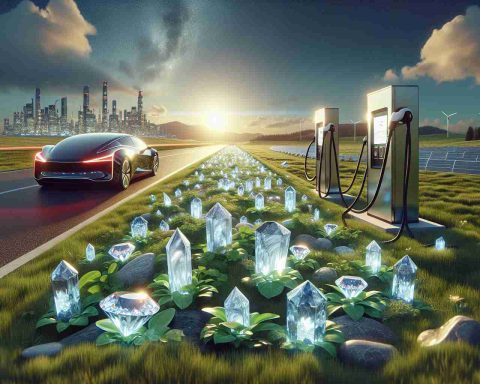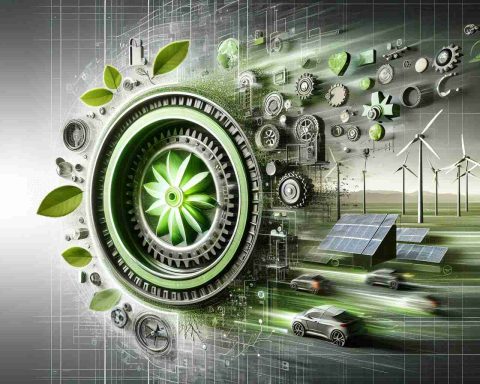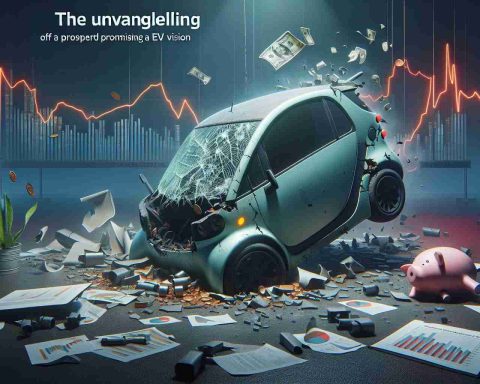The Electric Vehicle Revolution
With the electric vehicle (EV) market rapidly advancing, now is an ideal moment for individuals in the U.S. to embrace this sustainable change. The government is supporting this transition with an incredible tax incentive of $7,500 for eligible electric car buyers, making eco-friendly choices more accessible than ever.
Recent updates from the U.S. Department of Energy highlight five innovative models set to reshape the automotive landscape. Among the standout options are the Hyundai IONIQ 5 and IONIQ 9, remarkable SUVs that provide generous space and comfort, produced in Georgia’s Metaplant America. Even more, Kia enters the fray with the EV9 and 2025 EV6, crafted in their West Point, Georgia facility, while the luxury brand Genesis introduces the GV70 EV, manufactured in Alabama.
Despite these exciting developments, the future of this tax incentive remains uncertain amid a changing political climate. Nevertheless, the shift towards electric vehicles is gaining momentum, suggesting that the urge for a greener future will continue.
As we look to 2025 and beyond, the implications of this movement extend well beyond personal choices. The electric vehicle transition is crucial for cities, health, and the economy, fostering cleaner air, innovative infrastructures, and job creation in the green energy sector.
In conclusion, the time to explore electric vehicle options and take advantage of these incentives is now!
The Broader Impact of the Electric Vehicle Shift
The momentum behind the electric vehicle (EV) revolution signifies more than just a technological advancement; it marks a transformative shift in societal norms and values. As EVs become mainstream, they challenge our long-standing reliance on fossil fuels, promoting a more sustainable lifestyle that prioritizes environmental stewardship. The widespread adoption of electric vehicles could contribute to a drastic reduction in greenhouse gas emissions—an essential step in combatting climate change.
From a cultural perspective, the rise of EVs fosters a new automotive ethos. Car ownership is evolving from a symbol of status to a reflection of conscious consumerism. Increasingly, buyers are prioritizing sustainability and the impact of their choices on the planet, driving demand for cleaner technologies. This shift is not just about individual consumers—it’s shaping corporate strategies and influencing how companies approach manufacturing.
On a global economic scale, the emergence of EVs is creating new opportunities for innovation. The demand for lithium, cobalt, and other materials essential for batteries is reshaping international trade dynamics, igniting competition among nations for resources. Moreover, as governments incentivize EV production, entire industries dedicated to green energy and supporting infrastructure are burgeoning, leading to job creation and economic resilience.
However, this transition does not come without potential environmental consequences. Increased mining for EV battery components could lead to ecological degradation if not managed sustainably. As we progress into the next decade, striking a balance between technological advancement and environmental impact will be crucial. Ultimately, as electric vehicles gain dominance, the long-term significance of this shift will likely redefine our economies, cultures, and relationship with the environment.
Join the EV Revolution: Why Now is the Time for Electric Vehicles
The Electric Vehicle Landscape
The electric vehicle (EV) market is not just evolving—it’s soaring, driven by advancements in technology, government incentives, and a burgeoning demand for greener alternatives. With substantial federal tax credits, the U.S. government is making electric vehicles more accessible, with incentives up to $7,500 for eligible buyers. This financial boost is transforming how Americans view eco-friendly transportation, pushing sustainability to the forefront of consumer choice.
Key Features and Innovations
Recent reports from the U.S. Department of Energy spotlight five groundbreaking electric vehicles that signify a new era in the automotive industry. Among these are:
– Hyundai IONIQ 5: An SUV recognized for its spacious interior and cutting-edge technology, produced in Georgia’s Metaplant America.
– Hyundai IONIQ 9: A forthcoming model promising even more advancements and comfort.
– Kia EV9: A robust electric SUV tailored for families and suitable for various terrains, also made in Georgia.
– 2025 Kia EV6: An evolution of Kia’s earlier model featuring enhanced performance and design.
– Genesis GV70 EV: A luxury electric vehicle crafted in Alabama, offering an upscale driving experience without compromising sustainability.
These models reflect a significant investment in electric mobility, with production facilities located in strategic locations across the U.S. to bolster local economies and create jobs.
Pros and Cons of Electric Vehicles
Pros:
– Environmentally Friendly: EVs produce zero tailpipe emissions, contributing to improved air quality.
– Cost Savings: Alongside tax incentives, electric vehicles benefit from lower operational costs compared to traditional gasoline vehicles.
– Innovative Technology: Many EVs come equipped with the latest in smart technology, enhancing user experience through features like advanced safety systems and connectivity.
Cons:
– Charging Infrastructure: Although growing, the availability of charging stations can still be a concern in certain regions.
– Upfront Costs: Many electric vehicles have a higher initial purchase price, although this can be mitigated by tax credits and lower running costs.
– Range Anxiety: Potential buyers may worry about the distance EVs can travel on a single charge compared to gasoline vehicles.
Market Trends and Predictions
As we advance towards 2025, the electric vehicle market is projected to experience exponential growth. Analysts predict that EV sales will constitute a significant percentage of total auto sales by 2030, driven by increasing environmental awareness and governmental policies aimed at reducing carbon footprints.
Use Cases and Applications
Electric vehicles are not confined merely to everyday commuting. They are increasingly used in various sectors, including:
– Public Transport: Many cities are exploring electric buses to reduce emissions and improve air quality.
– Commercial Fleets: Businesses are transitioning to electric vehicles for deliveries and services to cut costs and promote sustainability.
– Luxury Markets: High-end brands are investing in electric models, catering to consumers’ desires for both performance and ecological responsibility.
Conclusion
The present moment is pivotal for anyone considering the switch to an electric vehicle. With compelling incentives and a strong lineup of innovative models, embracing an EV is not only a wise financial decision but a significant step toward a more sustainable future. Explore your options today and join the electric vehicle revolution!
For further details on electric vehicles, visit the U.S. Department of Energy’s resources on energy policies and incentives.














